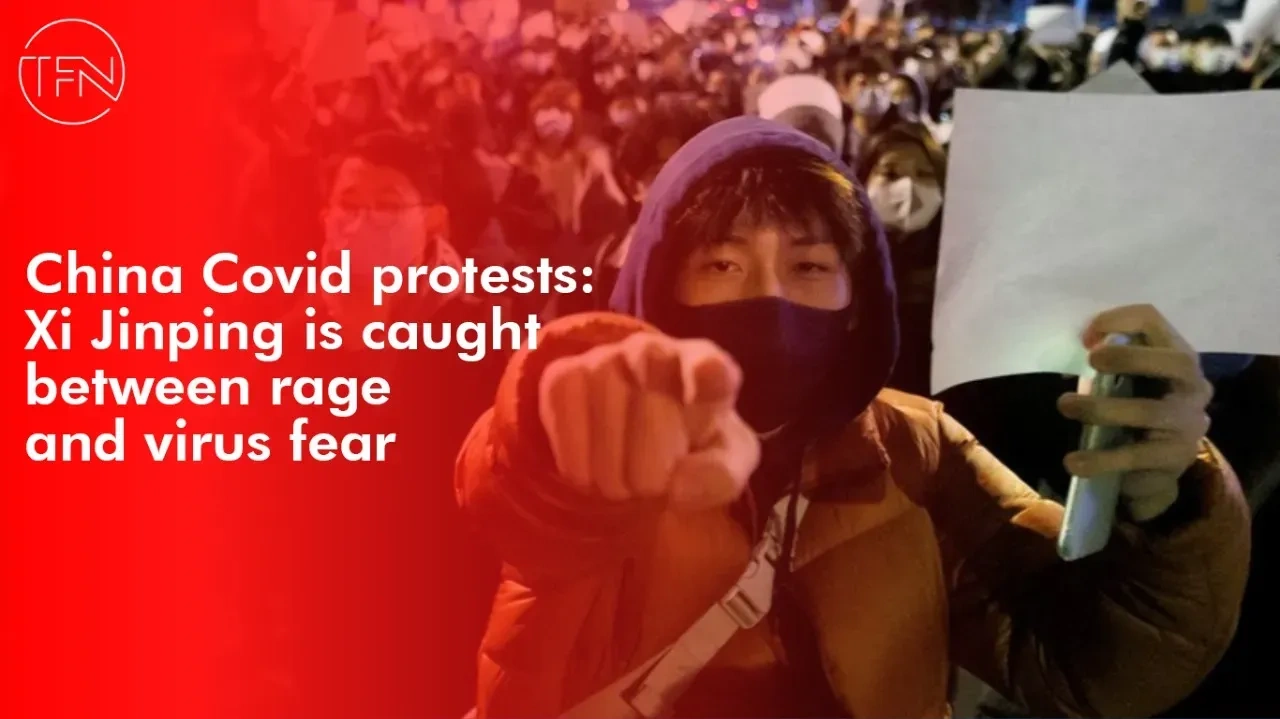
One billion people in China have been subjected to three years of widespread COVID testing and lockdowns, which has worn thin their patience.
That period of patience is now over.
Thousands of people have been protesting COVID restrictions in cities as part of a weary populace that has been questioning how much longer the country must put up with Xi Jinping's "zero-COVID" policy.
One of President Xi's biggest political challenges to date, the Chinese Communist Party (CCP) must now navigate rising wrath and a deep-seated fear of COVID as the country works to recover from the outbreak.
The unrest was sparked by a fire.
It would initially seem implausible that an apartment fire in the western city of Urumqi would ignite a statewide uprising.
But for the millions of urban Chinese who live in high-rise apartments, the terrible incident, which claimed the lives of ten people, was the worst nightmare scenario: locked in one's flat, unable to escape a roaring fire because of a rigidly enforced lockdown.
Authorities denied this, but it did not stop the public from becoming outraged and anxious, especially after videos and audio snippets reportedly showed citizens pleading and crying for their release surfaced online.
The occurrence was also the most recent in a string of terrifying tales about COVID restrictions.
Early on, during citywide lockdowns, there were stories of expectant mothers losing their babies and the elderly and weak passing away due to a delay in receiving medical care.
It became obvious that local authorities were having trouble keeping up with the number of lockdowns, and many of them also seemed to have similar reports of food and medicine shortages.
Then, additional horrific events started to occur, including children dying in quarantine facilities or a bus accident that killed numerous people who were being transported to quarantine centers.
Many had thought that during the most recent CCP meeting, where Mr. Xi solidified his position of power, a reprieve would be declared; however, he made it clear that there would be no modification to zero COVID, which caused even greater chagrin.
With China having one of the lowest per capita COVID death rates in the world, the program undoubtedly saved many lives. But it has also depleted its citizens' energies.
The COVID prohibitions have turned into a uniting experience that has stoked resentment across China, from large cities to remote areas like Xinjiang and Tibet.
Every segment of society has been inspired by it, including elites, manufacturing workers, middle-class families, and college students.
It raised the bar for the expression of more direct and abrasive opposition both inside and outside of China and encouraged many others when a man staged a protest on a bridge in Beijing and shocked the nation with his openly defiant criticism of President Xi.
Hundreds of factory employees protested for their rights in the central city of Zhengzhou while fighting with police and smashing windows and security cameras. In Chongqing, a man without a mask was heard yelling, "Give me liberty, or give me death!" This chant served as a rallying cry for many protesters.
When the Urumqi fire occurred, the scene was already prepared for significant protests. In that city, hundreds took to the streets before many more did the same in Shanghai, Beijing, Wuhan, Nanjing, and Chengdu. Some of the protesters even demanded that Mr. Xi and the CCP step down.
According to observers, the protests constitute a turning point in COVID dissent, making an already challenging position for the administration much more challenging.
They created "a terrible situation," according to Ho-Fung Hung, a sociologist at Johns Hopkins University, and the first significant challenge to Mr. Xi's power.
"By adopting the zero-COVID policy during the last two years, Mr. Xi put himself in a difficult situation." If the demonstrations intensify, he should distance himself and put pressure on the local government to repress the situation severely.
However, there is a chance that local authorities won't strictly adhere to the regulation because they are also exhausted by the zero-Covid rigidities.
Could the government dismantle COVID if it listened to the protesters?
Due to the nation's low elderly immunization rates, a dearth of highly effective domestic vaccinations, and the government's ongoing resistance to adopting foreign vaccines, it would be challenging to do that at present while minimizing deaths and infections.
The government must choose between importing foreign vaccines, which "may look embarrassing in nationalistic terms," and maintaining the line by closing the borders indefinitely, according to Oxford University modern Chinese history professor Rana Mitter.
China recently seemed to test the waters by easing regulations a little bit, shortening some quarantine times, and ceasing to track secondary connections.
But any relaxation of precautions will unavoidably lead to an increase in infections and fatalities, as has been observed in other nations like Singapore and Australia that went from having no COVID to coexisting with the virus.
Many Chinese cities, including Beijing and Guangzhou, have placed restrictions in place to combat new outbreaks. Officials worry that COVID deaths would spiral out of control and spark social unrest, which is part of the issue.
There is still a persistent dearth of effective vaccines, as well as the Chinese people's ongoing fear of the COVID virus. In recent protests, demonstrators have gathered in massive, crowded gatherings demanding an end to restrictions.

